Paulus, Friedrich “der Lord”, born 23-09-1890 in Breitenau, Hesse-Nassau  to Ernest and Bertha Paulus. His father, a school teacher, was not of noble blood; the only connection Paulus had to aristocracy was through his marriage with Elena Rosetti-Solescu. He tried, unsuccessfully, to secure a cadet ship in the Kaiserliche Marine and briefly studied law at Marburg University. His nickname then was “der Lord”. After leaving the university without a degree, he joined the 111th Infantry Regiment as an officer cadet in February 1910 and was promoted to second leutnant the year after. He married Elena Constance “Coco” Rosetti-Solescu
to Ernest and Bertha Paulus. His father, a school teacher, was not of noble blood; the only connection Paulus had to aristocracy was through his marriage with Elena Rosetti-Solescu. He tried, unsuccessfully, to secure a cadet ship in the Kaiserliche Marine and briefly studied law at Marburg University. His nickname then was “der Lord”. After leaving the university without a degree, he joined the 111th Infantry Regiment as an officer cadet in February 1910 and was promoted to second leutnant the year after. He married Elena Constance “Coco” Rosetti-Solescu

 on 04-07-1912 and from that point in his life he acted in an aristocratic manner, including his insistence personal cleanliness even in the most gruesome battlefields. The two met because Elena’s two brothers were soldiers in Paulus’ regiment and they met while on vacation in the Black Forest mountains. From this marriage the daughter Olga (born 1914) and the twins Friedrich and Ernst Alexander (born 11-04-1918) were born.
on 04-07-1912 and from that point in his life he acted in an aristocratic manner, including his insistence personal cleanliness even in the most gruesome battlefields. The two met because Elena’s two brothers were soldiers in Paulus’ regiment and they met while on vacation in the Black Forest mountains. From this marriage the daughter Olga (born 1914) and the twins Friedrich and Ernst Alexander (born 11-04-1918) were born.
The daughter Olga  , born 1914 and who died in 2003, was married to Achim Bar von Kutzschenbach a adjutant of Paulus
, born 1914 and who died in 2003, was married to Achim Bar von Kutzschenbach a adjutant of Paulus  They had also the twins
They had also the twins  Friedrich, who was killed, age 25, in action on 29-02-1944 in Anzio-Nettuno, Italy
Friedrich, who was killed, age 25, in action on 29-02-1944 in Anzio-Nettuno, Italy ![]() as a Hauptmann and Ernst Alexander, born on 11-04-1918. Ernst Alexander
as a Hauptmann and Ernst Alexander, born on 11-04-1918. Ernst Alexander  survived the war and committed suicide on 19-06-1970, age 52 in Straelen, Düsseldorf. Friedrich is also buried in the family grave in Baden Baden. When World War I began, Paulus’s regiment was part of the thrust into France, and he saw action in the Vosges and around Arras in the autumn of 1914. After a leave of absence due to illness, he joined the Alpenkorps as a staff officer, serving in Macedonia, France, and Serbia. By the end of the war, he was a Hauptmann. After the Armistice Paulus fought with the Freikorps
survived the war and committed suicide on 19-06-1970, age 52 in Straelen, Düsseldorf. Friedrich is also buried in the family grave in Baden Baden. When World War I began, Paulus’s regiment was part of the thrust into France, and he saw action in the Vosges and around Arras in the autumn of 1914. After a leave of absence due to illness, he joined the Alpenkorps as a staff officer, serving in Macedonia, France, and Serbia. By the end of the war, he was a Hauptmann. After the Armistice Paulus fought with the Freikorps  in the east as a brigade adjutant. He remained in the scaled-down Reichswehr that came into being after the Treaty of Versailles and was assigned to the 13th Infantry Regiment at Stuttgart as a company commander. He served in various staff positions for over a decade (1921–1933) and then briefly commanded a motorized battalion (1934–1935) before being named chief of staff for the Panzer headquarters in October 1935, a new formation under SA leader,
in the east as a brigade adjutant. He remained in the scaled-down Reichswehr that came into being after the Treaty of Versailles and was assigned to the 13th Infantry Regiment at Stuttgart as a company commander. He served in various staff positions for over a decade (1921–1933) and then briefly commanded a motorized battalion (1934–1935) before being named chief of staff for the Panzer headquarters in October 1935, a new formation under SA leader,
Victor Lutze 
 that directed the training and development of the army’s three Panzer Divisions.
that directed the training and development of the army’s three Panzer Divisions.  In February 1938 Paulus was appointed Chef des Generalstabes to Generaloberst der Panzertruppe, ze’s command. Heinz Guderian
In February 1938 Paulus was appointed Chef des Generalstabes to Generaloberst der Panzertruppe, ze’s command. Heinz Guderian 
 described him as ‘brilliantly clever, conscientious, hard working, original and talented’ but already had doubts about his decisiveness, toughness and lack of command experience. He remained in that post until May 1939, when he was promoted to Generalmajor and became Chief of Staff for the German Tenth Army, with which he saw service in Poland, the Netherlands (see About), and Belgium. Von Paulus was promoted to Generalleutnant in August 1940 and the following month he was named deputy chief of the German General Staff. In that role he helped draft the plans for the invasion of the Soviet Union. Paulus was promoted to General of the Armoured Troops and became commander of the German Sixth Army in January 1942 as he succeeded Fieldmarshal Walther von Reichenau
described him as ‘brilliantly clever, conscientious, hard working, original and talented’ but already had doubts about his decisiveness, toughness and lack of command experience. He remained in that post until May 1939, when he was promoted to Generalmajor and became Chief of Staff for the German Tenth Army, with which he saw service in Poland, the Netherlands (see About), and Belgium. Von Paulus was promoted to Generalleutnant in August 1940 and the following month he was named deputy chief of the German General Staff. In that role he helped draft the plans for the invasion of the Soviet Union. Paulus was promoted to General of the Armoured Troops and became commander of the German Sixth Army in January 1942 as he succeeded Fieldmarshal Walther von Reichenau


 and led the drive on Stalingrad during that summer.
and led the drive on Stalingrad during that summer.

 Paulus’ troops fought the defending Soviet troops holding Stalingrad over three months in increasingly brutal urban warfare. In November 1942, when the Soviet Red Army launched a massive counter-offensive, code named Operation Uranus, Paulus found himself surrounded by an entire Soviet Army Group.
Paulus’ troops fought the defending Soviet troops holding Stalingrad over three months in increasingly brutal urban warfare. In November 1942, when the Soviet Red Army launched a massive counter-offensive, code named Operation Uranus, Paulus found himself surrounded by an entire Soviet Army Group.  Paulus followed Adolf Hitler’s orders to hold the Army’s position in Stalingrad under all circumstances, despite the fact that he was completely surrounded by strong Russian formations. A relief effort by Army Group Don under Field Marshal, Erich von Manstein
Paulus followed Adolf Hitler’s orders to hold the Army’s position in Stalingrad under all circumstances, despite the fact that he was completely surrounded by strong Russian formations. A relief effort by Army Group Don under Field Marshal, Erich von Manstein 

 failed in December, inevitably: insufficient force was available to challenge the Soviet forces encircling the German 6th Army
failed in December, inevitably: insufficient force was available to challenge the Soviet forces encircling the German 6th Army  , and Hitler (see Did you know) refused to allow Paulus to break out of Stalingrad despite Von Manstein telling him it was the only way the effort would succeed. By this time, Paulus’ remaining armour had only sufficient fuel for a 12-mile advance anyway. In any event, Paulus was refused permission to break out of the encirclement. Kurt Zeitzler he died age 68, on 25-09-1963,
, and Hitler (see Did you know) refused to allow Paulus to break out of Stalingrad despite Von Manstein telling him it was the only way the effort would succeed. By this time, Paulus’ remaining armour had only sufficient fuel for a 12-mile advance anyway. In any event, Paulus was refused permission to break out of the encirclement. Kurt Zeitzler he died age 68, on 25-09-1963,


 the newly appointed chief of the Army General Staff, eventually got Hitler to allow Paulus to break out—provided they held onto Stalingrad, an impossible task. For the next two months, Paulus and his men fought on. However, the lack of ammunition, equipment attrition and deteriorating physical condition of the German troops prevented them from defending effectively against the Red Army. The battle was fought with terrible losses on both sides and great suffering. On 08-01-1943, Marshal, Konstantin Rokossovsky
the newly appointed chief of the Army General Staff, eventually got Hitler to allow Paulus to break out—provided they held onto Stalingrad, an impossible task. For the next two months, Paulus and his men fought on. However, the lack of ammunition, equipment attrition and deteriorating physical condition of the German troops prevented them from defending effectively against the Red Army. The battle was fought with terrible losses on both sides and great suffering. On 08-01-1943, Marshal, Konstantin Rokossovsky  commander of the Red Army on the Don front, called a cease fire and offered Paulus’ men generous surrender terms—normal rations, medical treatment for the ill and wounded, permission to retain their badges, decorations, uniforms, and personal effects, and repatriation to any country they wished after the war. Rokossovsky also noted that Paulus was in a nearly impossible situation. By this time, there was no hope for Paulus to be relieved or supplied by air, and most of his men had no winter clothing. However, when Paulus asked Hitler for permission to surrender, Hitler rejected this request almost out of hand and ordered him to hold Stalingrad to the last man. Hitler promoted Paulus to Field Marshal. In deciding to promote Paulus, Hitler noted that there was no known record of a Prussian or German Field Marshal having surrendered. The implication was clear: Paulus was to commit suicide. If Paulus surrendered, he would shame Germany’s military history.
commander of the Red Army on the Don front, called a cease fire and offered Paulus’ men generous surrender terms—normal rations, medical treatment for the ill and wounded, permission to retain their badges, decorations, uniforms, and personal effects, and repatriation to any country they wished after the war. Rokossovsky also noted that Paulus was in a nearly impossible situation. By this time, there was no hope for Paulus to be relieved or supplied by air, and most of his men had no winter clothing. However, when Paulus asked Hitler for permission to surrender, Hitler rejected this request almost out of hand and ordered him to hold Stalingrad to the last man. Hitler promoted Paulus to Field Marshal. In deciding to promote Paulus, Hitler noted that there was no known record of a Prussian or German Field Marshal having surrendered. The implication was clear: Paulus was to commit suicide. If Paulus surrendered, he would shame Germany’s military history.

 Paulus, a Roman Catholic, was opposed to suicide. During his captivity, according to General der Artillerie. Kommandeur IV Heeresgruppe, Max Pfeffer, Paulus said of Hitler’s expectation: “I have no intention of shooting myself for this Bohemian corporal”. Another General told the NKVD that Paulus had told him about his promotion to Field Marshal and said: “It looks like an invitation to commit suicide, but I will not do this favour for him.” Paulus also forbade his soldiers from standing on top of their trenches in order to be shot by the enemy. Generaloberst Erwin Jaenecke was a General who didn’t obey Hitlers orders and was made a scapegoat. Now captured although he at first refused to collaborate with the Soviets, after the attempted assassination of Hitler on 20-07-1944, Paulus became a vocal critic of the Nazi regime while in Soviet captivity, joining the Russian-sponsored National Committee for a Free Germany, with General der Artillerie, Walther von Seydlitz-Kurzbach.
Paulus, a Roman Catholic, was opposed to suicide. During his captivity, according to General der Artillerie. Kommandeur IV Heeresgruppe, Max Pfeffer, Paulus said of Hitler’s expectation: “I have no intention of shooting myself for this Bohemian corporal”. Another General told the NKVD that Paulus had told him about his promotion to Field Marshal and said: “It looks like an invitation to commit suicide, but I will not do this favour for him.” Paulus also forbade his soldiers from standing on top of their trenches in order to be shot by the enemy. Generaloberst Erwin Jaenecke was a General who didn’t obey Hitlers orders and was made a scapegoat. Now captured although he at first refused to collaborate with the Soviets, after the attempted assassination of Hitler on 20-07-1944, Paulus became a vocal critic of the Nazi regime while in Soviet captivity, joining the Russian-sponsored National Committee for a Free Germany, with General der Artillerie, Walther von Seydlitz-Kurzbach.

 A very fanatic anti Free Committy General was Generaloberst Walter Heitz
A very fanatic anti Free Committy General was Generaloberst Walter Heitz 
and appealing to Germans to surrender. Paulus later acted as a witness for the prosecution at the Nuremberg trials. From 1953 to 1956, he lived in Dresden, East Germany, where he worked as the civilian chief of the East German Military History Research Institute and not, as often wrongly described, as an inspector of police. The 91.000 German POWs taken at Stalingrad, 27.000 died within weeks and only 5-6.000 returned to Germany by 1955. The remainder of the POWs died in Soviet captivity. On 02-02-1943, the organized resistance of Axis troops in Stalingrad ceased. Out of the 91.000 prisoners taken by the Soviets, 3.000 were Romanian. German losses of 6th Army and 4th Panzer were over 300,000 men. Romanian casualties were 158,854, 114,520 Italians (84,830 killed, missing and 29,690 wounded) and 143,000 Hungarian (80,000 killed, missing and 63,000 wounded). Losses among Soviet POW turncoats Hiwis, or Hilfswillige range between 19,300 and 52,000. These were the survivors of the 20th Infantry Division  , 1st Cavalry Division
, 1st Cavalry Division  and “Colonel Voicu” Detachment. According to archival figures, the Red Army suffered a total of 1.129.619 total casualties; 478.741 men killed or missing and 650.878 wounded. These numbers are for the whole Don region; in the city itself 750.000 were killed, captured, or wounded. Anywhere from 25.000 to 40.000 Soviet civilians died in Stalingrad and its suburbs during a single week of aerial bombing by Luftflotte 4 under Generaloberst Alexander Löhr
and “Colonel Voicu” Detachment. According to archival figures, the Red Army suffered a total of 1.129.619 total casualties; 478.741 men killed or missing and 650.878 wounded. These numbers are for the whole Don region; in the city itself 750.000 were killed, captured, or wounded. Anywhere from 25.000 to 40.000 Soviet civilians died in Stalingrad and its suburbs during a single week of aerial bombing by Luftflotte 4 under Generaloberst Alexander Löhr 
 as the German 4th Panzer
as the German 4th Panzer  and 6th Armies approached the city; the total number of civilians killed in the regions outside the city is unknown. In all, the battle resulted in an estimated total of 1.7-2 million Axis and Soviet casualties. Paulus’s son Friedrich a captain was killed in action in February 1944, age 26, on the beachhead of Anzio, Italy and his son Ernst Alexander also a captain Alexander was wounded at Stalingrad and apparently was flown out of the Kessel before its fall, because he was arrested in 1944 by the Gestapo after his father started to cooperate with the Soviets. He apparently survived the war. In the spring of 1944 his Romanian wife Elena, who never trusted the Nazis, was told by the Gestapo that she could save her life if she would renounce her husband’s name, but she full of disdain turned her back to them. She was arrested and landed in some camp. After the war, Ernst and his mother lived in Western Germany. He made a family and took care of his mother, who never recovered from the loss of his beloved. Ernst committed suicide in 1970. He was 52, same age as his father, when he surrendered with his 6th Armee in Stalingrad. Friedrich Paulus was held in prison until 1953. He testified in the Nuremberg trials and had to bear the horrendous stares of the German public and all the nazi defendants, who surely would have yelled and hanged him. He was allowed to go back to Eastern Germany, which he did. He lived in Dresden-Oberloschwitz
and 6th Armies approached the city; the total number of civilians killed in the regions outside the city is unknown. In all, the battle resulted in an estimated total of 1.7-2 million Axis and Soviet casualties. Paulus’s son Friedrich a captain was killed in action in February 1944, age 26, on the beachhead of Anzio, Italy and his son Ernst Alexander also a captain Alexander was wounded at Stalingrad and apparently was flown out of the Kessel before its fall, because he was arrested in 1944 by the Gestapo after his father started to cooperate with the Soviets. He apparently survived the war. In the spring of 1944 his Romanian wife Elena, who never trusted the Nazis, was told by the Gestapo that she could save her life if she would renounce her husband’s name, but she full of disdain turned her back to them. She was arrested and landed in some camp. After the war, Ernst and his mother lived in Western Germany. He made a family and took care of his mother, who never recovered from the loss of his beloved. Ernst committed suicide in 1970. He was 52, same age as his father, when he surrendered with his 6th Armee in Stalingrad. Friedrich Paulus was held in prison until 1953. He testified in the Nuremberg trials and had to bear the horrendous stares of the German public and all the nazi defendants, who surely would have yelled and hanged him. He was allowed to go back to Eastern Germany, which he did. He lived in Dresden-Oberloschwitz

 but he found out that his beloved Elena had died in 1949. The last time he saw her was in late 1942. The social rejected Field Marshal became an a slated person always alone at home, living in psychological misery his last years. In late 1956, he developed motor neuron disease and was eventually left paralyzed.
but he found out that his beloved Elena had died in 1949. The last time he saw her was in late 1942. The social rejected Field Marshal became an a slated person always alone at home, living in psychological misery his last years. In late 1956, he developed motor neuron disease and was eventually left paralyzed.
Death and burial ground of Paulus, Friedrich “der Lord”.

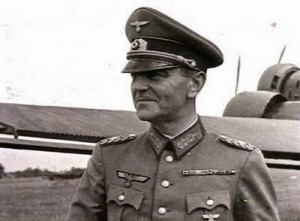

 He died in Dresden on 01-02-1957, age 76 of cancer, exactly 14 years after he surrendered at Stalingrad. First he was buried with military honor on the cemetery of Dresden-Tolkewitz His ashes later were brought for burial in a family grave in Baden-Baden on the Hauptfriedhof next to that of his wife, having not seen her husband since his surrender. General der Infanterie, Kommandeur der XXV Korps, Dietrich von Choltitz
He died in Dresden on 01-02-1957, age 76 of cancer, exactly 14 years after he surrendered at Stalingrad. First he was buried with military honor on the cemetery of Dresden-Tolkewitz His ashes later were brought for burial in a family grave in Baden-Baden on the Hauptfriedhof next to that of his wife, having not seen her husband since his surrender. General der Infanterie, Kommandeur der XXV Korps, Dietrich von Choltitz

 is buried close by.
is buried close by.





Message(s), tips or interesting graves for the webmaster: robhopmans@outlook.com





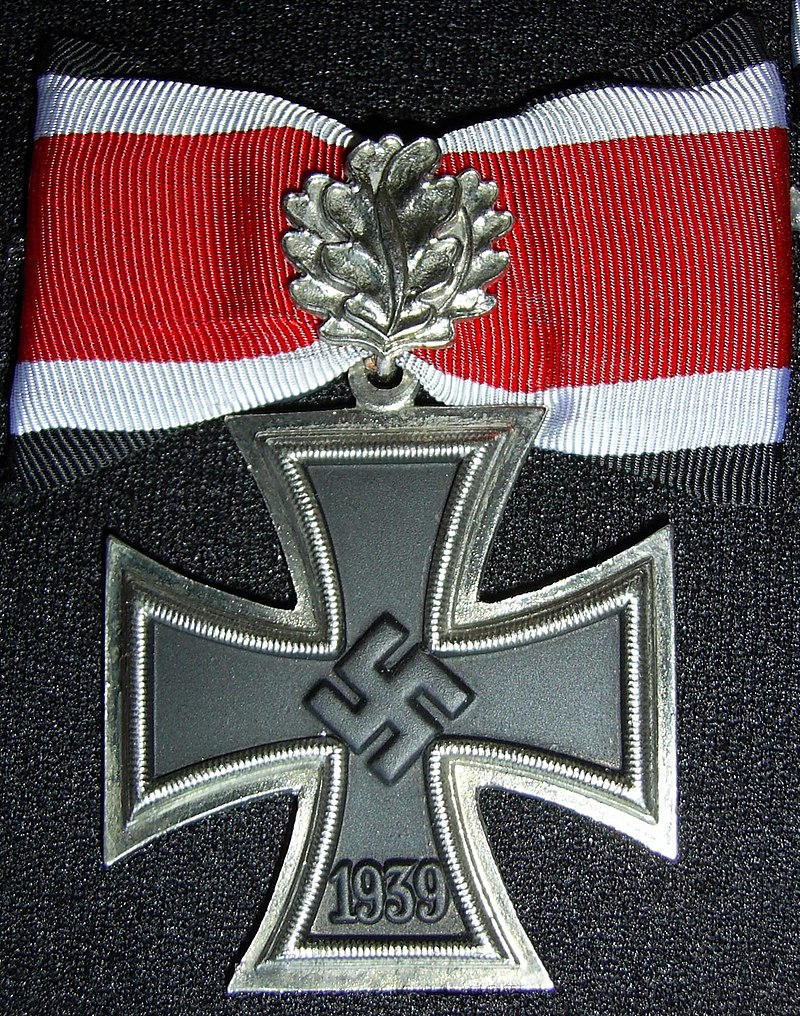
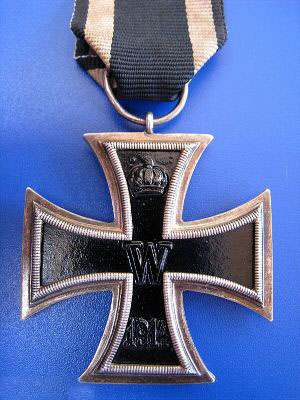
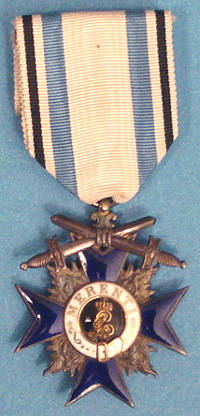

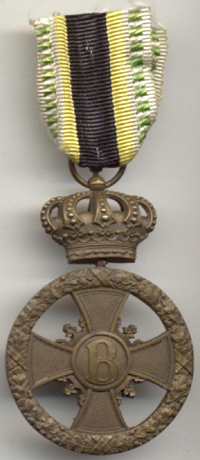











Leave a Reply